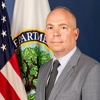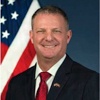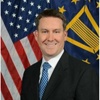Jason G. Martin is the Vice Director of the Development and Business Center (DBC) and the Acting Director for the Cyber Development Directorate, Defense Information and Systems Agency (DISA).
As the Vice Director of the DBC he facilitates the development of DISA’s core services and capabilities supporting the Department of Defense mission partners. He assists the director of the DBC in mission partner engagement and requirements processes for the agency to include technical feasibility studies, new innovation, proposal development, portfolio management, and DOD test and evaluation.
As the Acting Director for the Cyber Development Directorate he oversees a portfolio of services which include Perimeter, Mid-Tier (Joint Regional Security Stack), Endpoint defensive cyber operational capabilities, Cyber Situational Awareness and NetOps Solutions, along with Enterprise Identity and Zero Trust solutions.
Previously he served as Services Directorate (SE) Executive at DISA. In this position he was responsible for the Cloud/Compute and Storage portfolio as well as the operation of the DISA Ecosystem data centers, providing Department of Defense Enterprise Services to 4.5M users, and led Mission Partner application cloud and data center implementations. Additionally, he operated and maintained the global DISA internal network for more than 16,000 users.
Other assignments at DISA include serving as the Deputy for the DISA Services Directorate and Deputy Program Executive Officer for Enterprise Services (PEO-ES). In both roles, he served as senior authority for delivering global and enterprise-wide capabilities to the DOD while providing policy, oversight, and guidance to enable information sharing government-wide.
Mr. Martin entered the Federal Service in August of 2009 when he was assigned as the DISA Customer Management Executive. Prior to entering Federal Service, he served as a Senior Manager for Deloitte Consulting supporting programs across the Department of Defense. Mr. Martin began his career as a Software Engineer for Electronic Data Systems (EDS) supporting MCI/Worldcom andGeneral Motors Europe.
Mr. Martin is a member of the Board of Directors for the Armed Forces Communications and Electronics Association (AFCEA) Central Maryland Chapter. He is also a member of the Project Management Institute and certified as a Project Management Professional. Additionally, Mr. Martin is a designated DAWIALevel III Program Manager.
Mr. Martin received his Bachelor of Arts from the University of Missouri in Columbia, MO. He also completed the Senior Executive Fellows program at Harvard University, KennedySchool of Government, in 2013.












